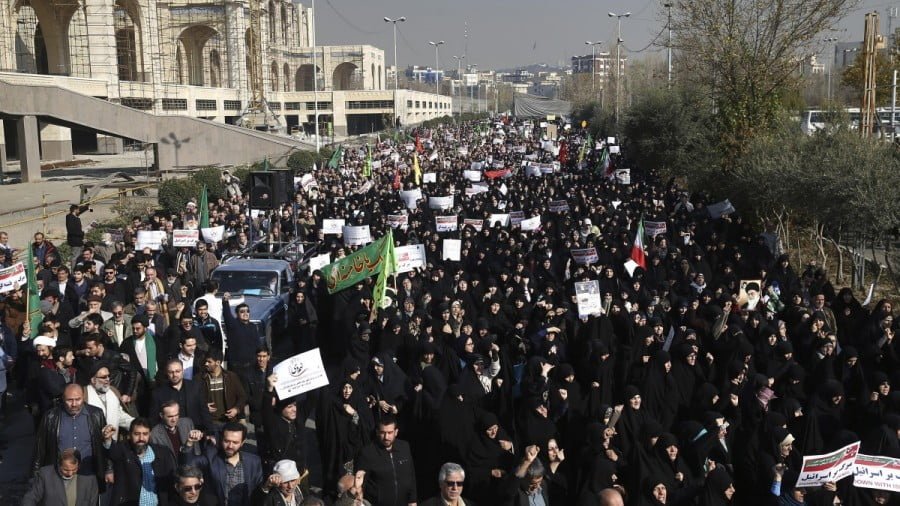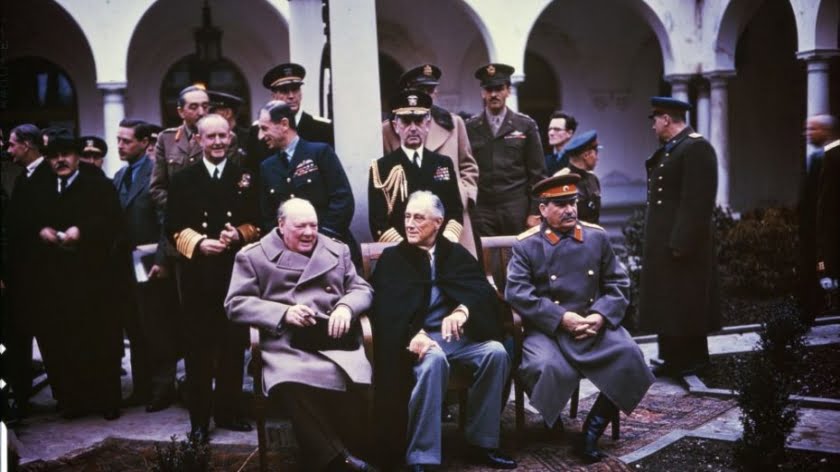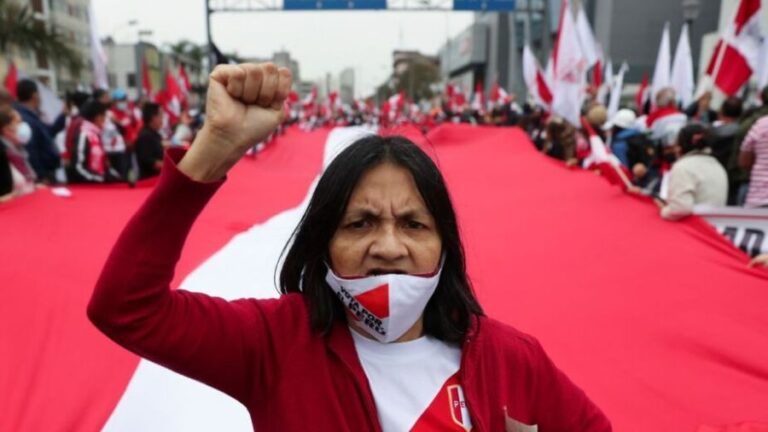Trump Is Rolling Out Neo-Reagan Doctrine on Iran
1- There’s a consensus that the Iran protests started from genuine economic concerns, but were then hijacked by regime change agents. Who were these agents and who supported them?
To the best of my understanding, yes, the protests began as apolitical ones against Rouhani’s new budget proposal that dramatically slashed state subsidies and threatened to reverse many of the economic gains from the previous Ahmadinejad Administration. Iranians were also concerned about the planned cuts to infrastructure development too. Like the government itself has since reiterated, every Iranian has the right to peacefully protest and criticize any elected official, and in this sense the origin of the latest nationwide movement was indeed genuine and started off for the right reasons, but as was mentioned in the question, these protests were soon hijacked by regime change agents intent on overthrowing the Islamic Republic.
I’ve written a lot about the dynamics of Hybrid Wars and their first stage of Color Revolutionary unrest in my 2015 book on the subject that’s freely available online in English at Oriental Review, and I strongly suggest that any English-literate members of your audience review it, and especially Appendix I where I talk about the core mechanics of these movements, if they’re interested in more details. In a nutshell, the US has a documented history of covertly exploiting legitimate grievances in order to provoke tensions between the state and its citizenry, with the end goal being to accentuate preexisting identity differences in diverse societies like as Iran in order to generate a self-sustaining terrorist insurgency against the government.
In the recent Iranian context, “sleeper cells” within the country were encouraged to use the pretense of participating in the legitimate economic protests as a front for developing their own political ones for advancing regime change, and it’s well known that the international actors who have an interest in this happening are the US, Israel, and Saudi Arabia. That said, the fact remains that despite there being reports of foreign citizens being arrested during these riots, the majority of the participants were indigenous Iranians, which actually follows the template of Hybrid Wars because oftentimes ordinary people get mixed up and misled into joining these events in at least a passive capacity by the protests’ chief on-the-ground organizers.
That’s not to excuse them for committing vandalism and other crimes, but just to explain the overall crowd dynamics of how this occurs. In any case, the most violent riots were isolated and didn’t involve too many people, paling by a large magnitude to the worst examples from the 2009 so-called “Green Revolution”, but as is common during incipient Color Revolutions, decontextualized footage was edited and placed onto social media in order to mislead more of the masses and the international community into believing that the agitations were larger than they actually were. This explains the government’s wise decision to temporarily restrict some social media services during the height of the disturbances in order to prevent the Hybrid War “virus” from spreading through the country’s “network” and “infecting” other citizens.
Because the amount of weapons that were actually used during the unrest was minimal, the situation didn’t escalate as some of the external organizers might have originally intended, which is why they died down so quickly when confronted with the overwhelmingly large civil society demonstrations held in support of the government. Even so, while the worst stage of the turmoil appears to be over, it shouldn’t be automatically assumed that the regime change movement itself has been fully defeated, since there’s a chance that many more weapons than expected have been smuggled into the country and that other “sleeper cells” are waiting to be activated at a future date after studying the government’s response to the latest incidences and attempting to perfect newer and more effective terrorist crowd-control manipulations.
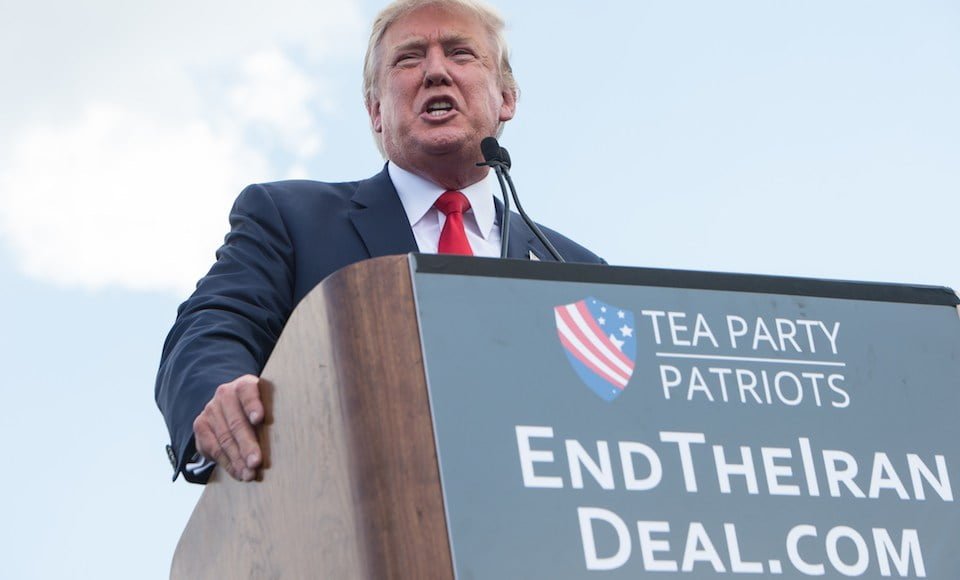
2- Were these protests Trump’s chance to avenge what he felt was Obama’s “lost opportunity” during the 2009 “Green Revolution” that he’s so harshly criticized before in the past?
Yes and no. On the one hand, Trump wishes that Obama “did more” at the time, but the fact is that there was only so much that the US could do during those events, and its options were limited. Providing “political support” and “encouragement” is naively thought to have been a “game-changer” if it occurred, but that’s doubtful because words probably wouldn’t have been sufficient to succeed in generating a critical enough mass of protesters for overthrowing the government, especially when confronted with the Islamic Revolutionary Guard Corps (IRGC) who were actively rooting out all violent infiltrators. In addition, we actually see that Trump and especially Netanyahu’s open support for the latest protests had the opposite effect and contributed to their decline, not expansion, because American and Israeli backing totally discredited them in the eyes of most of the populace.
Nevertheless, it should be said that the 2009 so-called “Green Revolution” was never really intended to be a regime change operation, but rather functioned as a vital probing attempt for discovering how the IRGC would respond to Hybrid War technologies. Since Iran is by and far the strongest Mideast power, the US cunningly predicted that whatever techniques were tested against it and proved their efficiency (even if at least temporarily in catching the government somewhat unaware or in attempting to provoke citizen-state violence like was explained in response to the previous question) would more than likely have a much stronger effect against the comparatively weaker states that Washington planned to target throughout the upcoming “Arab Spring” theater-wide Color Revolution. Suffice to say, if the “Green Revolution” is reconceptualized as a probing attempt against the strongest Mideast country, then it was cynically a wild success because the tactics that were utilized there were later perfected for use against Tunisia, Egypt, Libya, and Syria.
It’s highly unlikely that Trump seriously believed that his blatant endorsement of the economic protests and the subsequent political riots that exploited them would in any make them more appealing to Iranians, which raises the question of why he would seemingly ruin his and his allies own plot. Trump, contrary to the mass media caricatures of him as an idiot incapable of strategic thought, is actually very intelligent and even devious, so it can’t be dismissed that he intended for the Color Revolution to die down after his tweets in order to craft a false sense of security in the country prior to a second wave of unrest at a later predetermined date or following another exploitation of legitimate economic protests. Not only that, but his ominous words about how “the world is watching” hint that his only concern was for the disturbances to produce decontextualized YouTube footage of “the state suppressing peaceful democratic protesters” in order to establish the basis for imposing multilateral sanctions against Iran on those grounds.
Accepting that the present economic situation in Iran is to a large part due to the pre-2015 international sanctions and most of the US’ currently existing unilateral ones, and seeing as how this state of affairs is what inspired the economic protests in the first place, then it would follow that Trump and his regional cohorts have an interest in exacerbating these challenging conditions by giving their European underlings a “plausible” reason to recommence sanctions against the Islamic Republic, albeit no longer on “nuclear-related” grounds but this time on “democratic” and “humanitarian” ones. Should this scenario play out in the coming future and the US gets the EU to follow Trump’s lead in sanctioning Iran over its response to the latest turmoil, then the economic situation will expectedly deteriorate in the country sometime thereafter and add a powerful impetus to the protest movement, thus naturally bringing more bodies out into the street and essentially providing regime change terrorists with countless “human shields” against a government crackdown the next time they try to destabilize the state.
Altogether, it’s better to look at Trump’s behavior during the recent disturbances as building upon Obama’s, seeing as how neither intended for the violence that occurred during their administrations to topple the Iranian government but instead sought to pursue more oblique objectives instead. Obama wanted to perfect the “Arab Spring” theater-wide Color Revolutions by testing the technology on much more powerful Iran prior to using it against the weaker Arab countries of the region. Also, Obama hoped that the nationwide destabilization during that time would succeed in shaping perceptions to the point of ensuring that “reformers” won the next elections and made it much easier to clinch what eventually became the 2015 nuclear deal. Trump, like I explained, is also testing Hybrid War technologies in Iran, though for use against the country in the coming future as opposed to the region, hoping to militarize the most extreme minority opposition groups against the government in surrounding the centrally located Persian majority with peripheral terrorist insurgencies. Another goal is that he hopes to provoke Iran to pull out of the 2015 nuclear deal so that he has the excuse to put this Hybrid War plot into action.
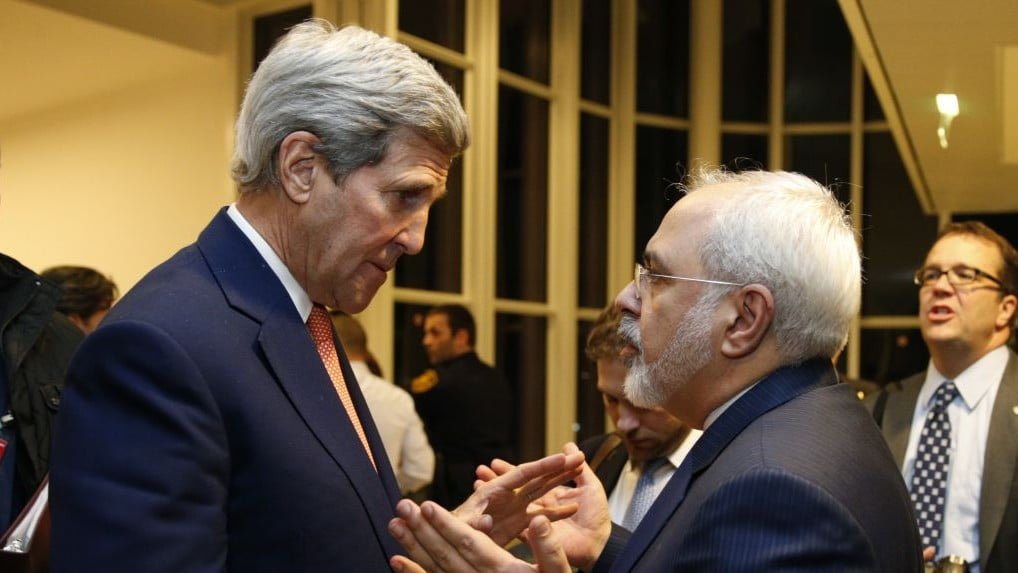
3- How is Trump’s “Iran strategy” different than Obama’s subtle diplomacy?
Trump is “pure Americana”, like one of my good friends described him the other day, and he’s shown the world the US’ true face to such an extent that his international slogan could be “masks off, daggers out!” There aren’t as many duplicitous games being played by Trump abroad as during Obama’s reign, in that, to be cliché, “what you see is what you get”. Everyone knows who Trump likes and dislikes, it’s not difficult to figure out if one listens to his speeches or what his representatives say, and none of this should have been unexpected anyhow had anyone paid any attention to what he said all throughout the presidential campaign.
Obama’s “subtle diplomacy” was a smokescreen to hide his foreign policy aggression that contradicted his campaign promises, while Trump’s “Iran strategy” is simply the President following through on his own promises prior to the election. Trump is more difficult to get along with because everything that he does is designed, as he sees it, to “Make America Great Again”, and this consummate businessman won’t compromise on the principles of his mission. Obama was nothing at all like the “patriot” that Trump is and instead sought to advance “liberal-globalist” goals such as weakening aspects of American power in order to enhance those of international organizations (the UN) that Trump believes have been subverted by the US’ “strategic rivals” (per the declarations contained in his new National Security Strategy).
While openly appearing more “likeable” and “trustworthy”, at least to an international audience, Obama was actually much more subversive than Trump in the strategic sense simply because he caught so many people off guard by his act, while Trump is “the real deal” and “says everything like it is”, for better or for worse. The relevance of all of this to Iran is that Obama wasn’t engaging in “subtle diplomacy” or had any “positive intentions” in striking the 2015 nuclear deal, but was trying to strategically disarm the country’s decision makers by making it think that the US had either “sold out”, “given up”, or was trying to “co-opt” it, all three scenarios of which Obama played masterfully in attempting to deceive Rouhani’s “reformist” administration.
All the while, the US was plotting to do exactly what Trump is poised to set into motion through his own Hybrid War plans, seeing as how clandestine regime change plots usually remain constant throughout US Presidential transitions because the country’s permanent military, intelligence, and diplomatic bureaucracies (or “deep state”) rarely change. The only difference is that Trump isn’t shy about showing Iran what he’s about to do, and that’s part of his leadership style in trying to intimidate his adversaries as well. This is why I wrote an ironic article immediately after the election titled “Iranians Should Be Thankful For Trump” because he openly telegraphed his aggressive intentions with proud snarls when compared to the insincere smiles that hid Obama’s secret backstabbing scheme.
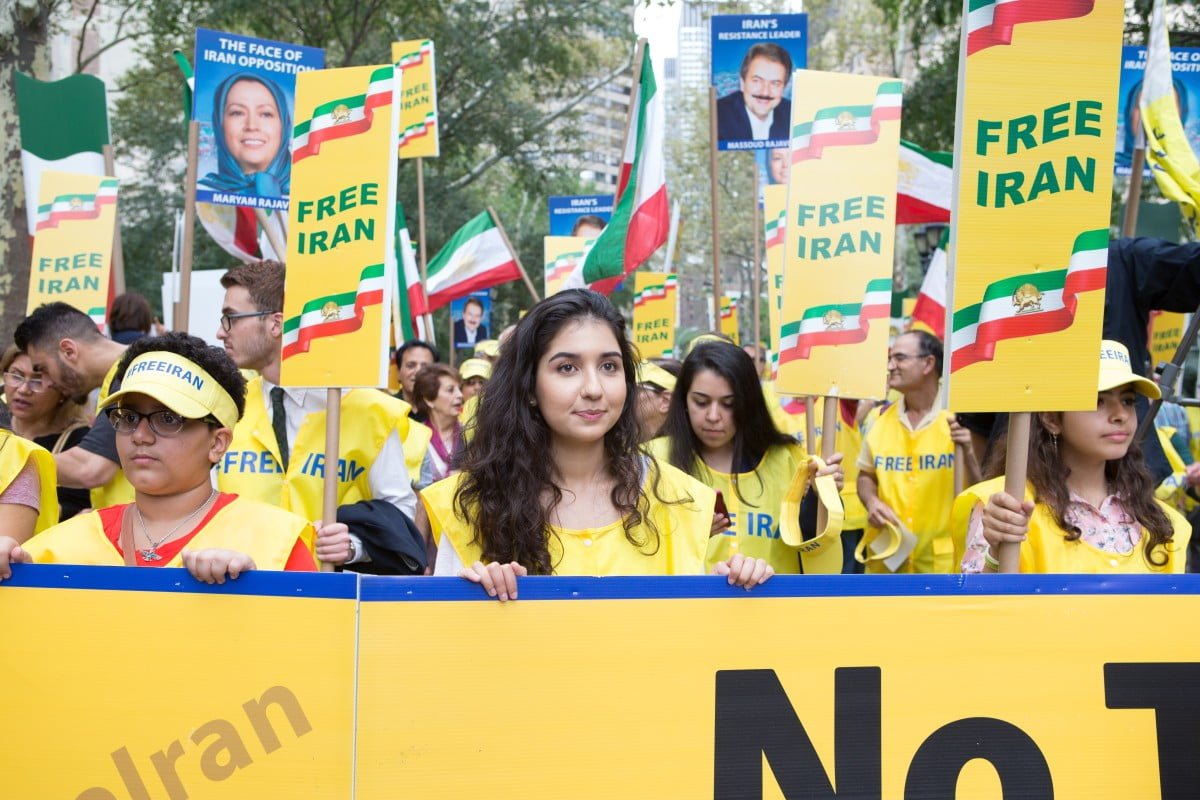
4- MEK (Mujahedeen), or more particularly its civil wing of the “National Council of Resistance of Iran”, probably along with Israel, are actively supporting the protesters. What does that tell us about the nature of the protests?
This is proof positive that everything that I spoke about above is true, namely that the US is indeed using its in-country proxies to hijack the originally economic protest movement and transform it into terrorist regime change riots in order to trigger the “societal conditioning” necessary for producing a self-sustaining Hybrid War between Iran’s peripheral minority ethnic groups and its centrally located Persian ethnic majority. Iran is not as internally fractured along identity lines as the US and its allies want the world to believe, but nevertheless, their operative experiences in other similar battlefields such as the former Yugoslavia and Syria show that even the most presumably unified states can eventually be torn apart at the seams after enough pressure is put upon them, especially under certain scenarios meant to provoke this planned identity discord.
None of this necessarily indicates that Iran will also succumb to this stratagem, but just that its leadership needs to responsibly be aware of the US’ plans and therefore take the appropriate proactive steps for offsetting this potential sequence of events within its own territory. The specific solution varies depending upon the country involved, but the general template is that governments must wield the complementary tools of information outlets and patriotic NGOs together with state-supported socio-economic development plans to convince the majority of the targeted minority demographic that they have a self-interested stake in remaining part of the identity-diverse system in which they live. Those who are believe otherwise – whether due to chronic neglect from the center and/or external infowar-terrorist (covert) operations – are predisposed to joining violent anti-government movements once they materialize.
The US’ Iran strategy is to provoke the peripheral minorities, especially Kurds and Baloch (and if they’re “lucky”, even the Azeris and possibly also Arabs), into taking up arms against the Persian minority largely concentrated in the central portion of the state, with the terrorist element of the Hybrid War receiving a strong boost from anti-government Persians who come out to the streets – whether sincerely or because they’re misled by decontextualized YouTube footage of citizen-state clashes – and destabilize the country’s core through a simultaneous Color Revolution. Iran withstood the ferocity of Saddam Hussein’s war on the Islamic Republic that attempted to use many of the same terrorist means, but it doesn’t have experience with this happening concurrently with an economic-motivated Color Revolution in the urban centers, and the US knows this which is why it’s adopted this model of asymmetrical warfare against the country.

5- Trump would definitely not miss a chance to undermine or outright kill the Iran deal, so what do you think he’ll do the next time that he’s scheduled to report to Congress about it?
It really depends, because retaining the deal – at least even just nominally – provides the US with a certain degree of leverage that it would lose by formally withdrawing from it. If the US was the first one to pull out of the agreement, then whatever more openly hostile moves it takes against Iran such as directly supporting the peripheral terrorist groups or implementing an even harsher sanctions regime, would appear less convincing to the target populace. The only move that Trump would have left is to play the terrorist card, which limits his options and accordingly his chances of successfully overthrowing the Iranian government.
However, if he remains in the agreement but provokes Tehran to pull out first, then Washington would have the normative upper hand in attempting to “justify” its support to terrorists and also reimposing more sanctions, especially multilateral ones from the Europeans. It shouldn’t be forgotten that what Trump wants to do is shape the economic conditions in Iran to such a point that they become even more unbearable for the populace and trigger genuinely concerned citizens to join protest movements. The US must achieve a 2009-like critical mass of civilian discontent in order to pose any threat to the ruling authorities, but unlike nearly a decade ago, this time the urban manifestations would be complemented by selective terrorist acts within the cities and a raging insurgency all throughout the peripheral regions (if everything goes according to the US’ plans).
In and of itself, the sudden shifting of the regional dynamic back from the strategic depth that Iran has acquired in Lebanon, Syria, Iraq, and Yemen and into the country’s very own heartland would make it more likely for US-backed proxy wars in these aforementioned battlefields to achieve a greater degree of success, thus representing a “Neo-Reagan Doctrine” of “rolling back” the “evil empire” of Iran in the New Cold War just as Trump’s hero did against its Soviet predecessor in the Old Cold War.
Having established the game plan, if the US takes the first step in pulling out of the deal and “punishing” Iran afterwards, then many people will realize the obviousness Washington’s tactics in trying to turn the citizens against their government, but if Tehran is the one to make this move first and is consequently “punished” in response, then there’s a greater chance that more people might blame the authorities for their forthcoming economic difficulties and thus potentially bolster the ranks of any forthcoming pre-Color Revolution protest movement.
All of these interrelated factors, plus Trump’s inherent unpredictability, make it almost impossible to accurately forecast his upcoming decision concerning the nuclear deal. Pulling out of it would be akin to surrendering an ace up his sleeve and would make it less likely that the Europeans would follow his lead with sanctions, while retaining it buys more time for Washington to provoke Tehran into withdrawing first, possibly in response to the US convincing the EU to sanction Iran on “democratic” and “humanitarian” pretexts in the coming months stemming from a decontextualization of the most recent strife and therefore setting into motion the Hybrid War that was fleshed out in this interview.
By Andrew Korybko
Source: Oriental Review

